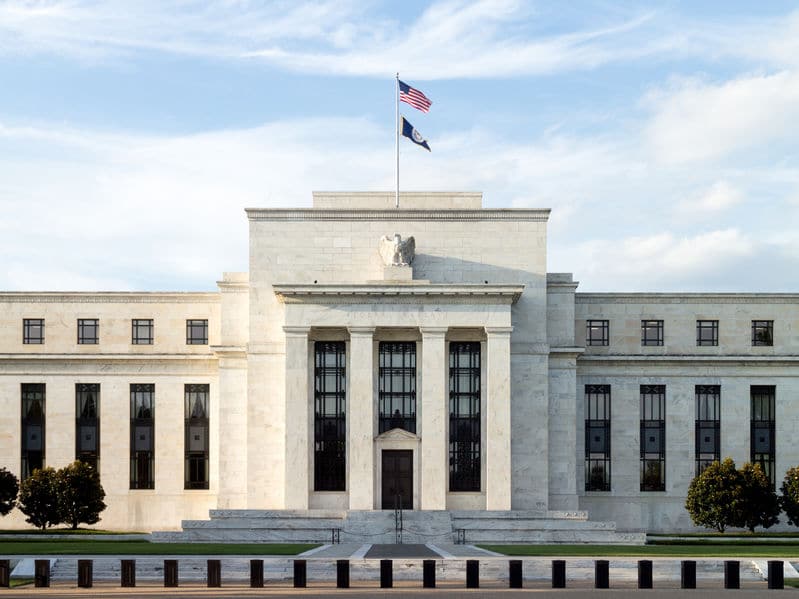“Inflation is still high. The ongoing progress in bringing it down is not assured and the path forward is unsure.” — Fed Chair Jerome Powell, March 20 Press Conference
The U.S. stock market just had its best week of 2024, on the heels of the Federal Reserve leaving its key interest rate unchanged (for the 5th straight time) and signaling three rate cuts during the rest of year.
As we pointed out in our January 2024 Commentary, U.S. stocks tend to rise in presidential election years, and 2024 so far is in line with that. However, celebrating three rate cuts in 2024 could be premature.
What we are seeing at this time is a healthy U.S. economy with above-target inflation. While we think a strong economy is always good news for the general population, investors anticipating a return to much lower interest rates could be in for a disappointment.
======================================================================
The Last One of These Things Does Not Fit with the Others
Updated Federal Reserve 2024 forecasts
(March FOMC Summary of Economic Projections)
— Core inflation (minus food and energy) expectations were revised higher – 2.6% in 2024 vs. 2.4% earlier forecasts. Since the first half of 2023, core PCE forecasts have generally come in or held stable from one meeting to the next; this push up in the core PCE forecast is a shift.
— U.S. economic growth is expected to be higher: GDP growth of 2.1% is forecast for 2024, up from the Fed’s 2024 forecast of 1.4% from the end of Dec. 2023. This quarter was the first time since June 2021 that the FOMC saw the risk to GDP growth as skewed to the upside.
— U.S. job market expected to stay strong. Unemployment at a relative low 4%.
— Fed funds rate down to 4.6% by year-end 2024 from the current level of 5.25-5.5%.
==============================================================
Why Higher for Longer
We are not highly concerned about whether the Fed will be able to lower its key rate once, twice or thrice in 2024. What we do see is confirmation of what we have been saying since 2022: That U.S. interest rates and inflation are likely to remain higher for longer. This is not a disastrous development (we have experienced the Fed Fund rate at these levels many times in the past within the context of a healthy economy), but it does present a new paradigm in which to invest.
What is likely to keep inflation and interest rates higher than the years between the Great Financial Crisis and Covid? Higher geopolitical risk, aging populations in the developed world resulting in labor shortages, costs associated with climate change and the transition to renewable energy, the rewiring of the global supply chain and more trade barriers. All these factors feed into keeping input costs high and constraining growth in advanced economies.
The Implications
U.S. Equities. On a relative basis, U.S. small-cap stocks and international equities have not benefited as much from market enthusiasm and look more attractive by most valuation measures. This supports our ongoing strategic thinking regarding the need for geographical and market cap diversification within equities.
Foreign Equities. Country and currency diversification may become more important due to the bevy of elections worldwide that could change the direction of fiscal and monetary policies. Rising geopolitical tensions could also trigger more trade restrictions across the globe, resulting in further economic fragmentation. As such, the trend of developed markets reshoring/friend-shoring will likely continue to gain momentum benefiting countries such as India, South Korea, Vietnam, Mexico and a host of others.
Fixed income. With a nod to the dramatic rise in equities in 2023, making sure our fixed-income allocations are topped up is prudent. Yields remain soundly above where they have been over the last 15 years and historically speaking, a swift plunge like the one we saw in the fourth quarter has been followed by even lower rates. Whether it be an economic slowdown or recession that drives rates down, the potential for capital gains enhances the case for fixed income in the near term.
Real assets. While concerns over inflation seem to have diminished in the near term, we continue to believe that inflation is not likely to return to the ultra-low levels of the last 15 years, which makes real assets an important component of portfolios. Moreover, several areas including infrastructure with its secular tailwinds, offer relatively attractive valuations following a lag during the 2023 due to the spike in interest rates.
Diversifiers and private markets. Markets with higher uncertainty and volatility (as well as higher interest rates) are more prone to dislocation and inefficiency, providing a backdrop in which hedge funds have typically thrived. Separately, with banks pulling back from the less-liquid corners of business lending, private credit strategies are stepping in to make loans to solid businesses at yields reaching into the double digits in exchange for less liquidity and patience. In this segment, we are looking at potential opportunities in commercial real estate credit, a space showing early signs of stress.



